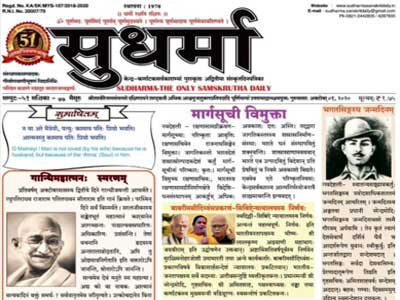An ominous belt of turbulence now circles India. From Kathmandu to Colombo, Dhaka to Malé, and deep inside Pakistan, a fierce storm of public anger, broken economies, and betrayed hopes is shaking South Asia. What some call the ‘Arc of Instability’ is no longer just a geopolitical phrase—it is a living reality.
Governments have fallen, parliaments have cracked, and the youth have risen again and again, only to hit the brick wall of systemic rot. The streets of the region rumble with the same frustrated cry: no jobs, no justice, no future.
In Nepal, the ‘Soda Water’ youth protests that erupted briefly fizzled like a shaken bottle, exploding onto the streets of Kathmandu and Pokhara. Young men and women, barely in their twenties, rallied against corruption, nepotism, and staggering unemployment. Prime Minister KP Sharma Oli was forced out in September, and yet the movement already feels spent.
Why? Because Nepal’s economy lies trapped in a cycle of dependence—reliant not on domestic strength but on remittances and foreign aid. The young generation, educated yet jobless, sees the streets as their only career path. Social media bans imposed during the protests added fuel to the fire, but while governments can silence tweets, they struggle to alter destiny. The bigger tragedy is that, even after yet another fall of a leader, the same cracks remain untouched.
Bangladesh once flaunted itself as South Asia’s economic miracle, a textile-fueled engine of growth. That sheen is now wearing thin. Inflation has tormented the masses, violent clashes scar Dhaka, and disillusionment spreads.
The ‘Quota Reform Movement’ of 2024 toppled Prime Minister Sheikh Hasina after 15 years in power and thrust Nobel Laureate Muhammad Yunus into the role of interim leader. At first, it was hailed as a moral reset. A year later, enthusiasm has curdled into frustration. Elections remain in limbo. Job shortages persist. Allegations of human rights excesses bite into Yunus’s reformist halo. Students who once celebrated change warn today that street explosions could be only weeks away if open polls do not arrive soon.
Sri Lanka remains the cautionary tale of the region. The Aragalaya movement of 2022 chased the Rajapaksa dynasty into disgrace. In 2024, the victory of Anura Kumara Dissanayake’s leftist wave raised new hopes. But by 2025 the grim reality is back.
The country survives on IMF ventilators. Debt shackles every budget. Tourism sputters, never fully recovering from the dual damage of pandemic and political chaos. The ‘India Out’ hysteria that pushed Colombo into China’s embrace has left Sri Lanka more vulnerable than ever to debt-trap diplomacy. Inflation is unrelenting; political power remains contested between elected officials and an overbearing military. Citizens scrape for food, fuel, and dignity while elite deals decide their future. The Rajapaksas may be gone, but the deeper Rajapaksa-ism—corruption, cronyism, debt without accountability—remains alive.
If South Asia is unstable, Pakistan is in perpetual freefall. Its 2024 elections were no democratic triumph but a theater of suppression, violence, and fraud. Imran Khan languishes in prison as the toxic rivalry between civilian leaders and the military deepens.
Meanwhile, inflation nears 40 per cent, terrorist attacks echo through Khyber Pakhtunkhwa and Balochistan, and foreign reserves scrape the bottom. Pakistan presents what economists call a ‘polycrisis’: every crisis bleeds into the next until the entire state resembles a patient in septic shock. For ordinary citizens, survival has become the only politics.
The Maldives, though tiny compared to its neighbors, punches above its weight in instability. President Mohamed Muizzu’s aggressive tilt toward China has unsettled domestic politics and strained ties with India, traditionally its closest partner. Coalition governments wobble; corruption scandals proliferate; debt spirals threaten the nation’s tourism lifeline. For Maldivians, storms are no longer environmental alone—the political climate itself is volatile.
From Himalayan valleys to Indian Ocean atolls, a striking pattern binds these upheavals: weak domestic production, narrow economic dependence, and massive youth discontent. Nepal relies on remittances, Bangladesh on garments, Sri Lanka and the Maldives on tourists, and Pakistan on foreign aid. In every case, the loss of external support or global shocks—whether a pandemic, IMF negotiations, or border tensions—pushes societies straight to the edge.
The rawest nerve is the youth. They are educated, networked, and ambitious, but locked out of prosperous futures. Their aspirations link to the digital economy, global opportunities, and modern jobs. Their reality offers unemployment queues, migration routes, or political despair. This gap is combustible, and the matchbox is always in their hands.
For India, this arc of turmoil is no distant drama. It is a neighbourhood reality threatening both security and diplomacy. Strategic shifts toward China by Sri Lanka and the Maldives, militant volatility in Pakistan, and the collapse of political order in Nepal and Bangladesh all ripple directly into New Delhi’s calculations.
India aspires to be South Asia’s anchor of stability—a rising global power flanked by disorder. But diplomacy alone may not suffice. Waves of refugees, trade disruptions, or sudden militant escalations are already testing India’s resilience.
The danger in South Asia today is not merely that governments fall; it is that they do not. It is that hope itself falls. Nepal’s ‘Soda Water’ fizzles, Bangladesh’s reforms stall, Sri Lanka trades one master for another, Pakistan stumbles endlessly, and the Maldives walk into strategic quicksand. The people rise, shake the stage, and are forced back into the shadows as the cycle resets.
True stability will demand more than IMF loans or symbolic elections. Unless domestic industries thrive, middle classes expand, agriculture and manufacturing strengthen, and youth find dignity in work, the script will not change. The alternative is grim: a region chained to debt, buffeted by superpower rivalries, and governed by regimes always bracing for the next protest wave.
The arc has already caught fire. The only question left is where the explosion will spark next.

















Related Items
CEOs who survived childhood disasters take bigger risks with debt
Are broken relationships the price of women's empowerment?
Climate scientists are ignoring fast-growing cities in Africa and Asia